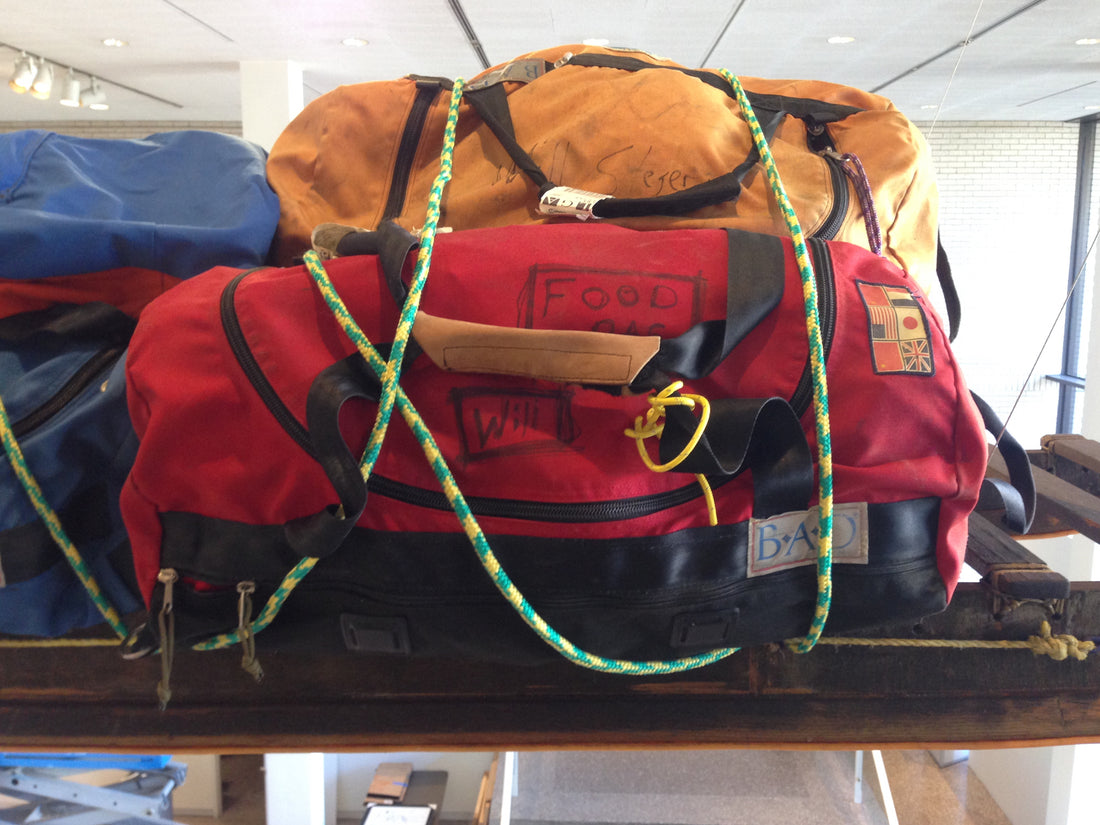
A Short History of the Duffel Bag
Share
Above Photo: Original BAD BAGS from Will Steger's groundbreaking 1990 human-powered crossing of Antarctica from a display at the Minneapolis College of Art and Design.
Merriam-Webster defines a duffel bag as, “A soft, oblong bag for personal belongings.” Pretty broad, but fitting, considering duffels are some of the most popular travel bags on the planet. And for good reason: they’re versatile, tough, reliable and, easy to use.
It all started in a Belgian town named Duffel in the province of Antwerp. According to the Online Etymology Dictionary, the town is where this type of “coarse woolen cloth … was originally sold.” The early bags of the 17th century were cylindrical, with a drawstring at one end, which was also how one carried the bag (not very comfortable, or practical).
During World War II, the bag style was borrowed by military forces and converted to a slightly more user-friendly organization and carrying design for soldiers, featuring straps and pockets but with the same basic shape, single strap and closure feature.
American troops returning from Europe by the thousands introduced these bags to the East Coast of America and from there they spread like a virus. Why? Simplicity and functionality.
From there, the history gets a little hazy. Duffel bags, now spread around the world after the war, would inevitably be improved on. The straight-zippered tube duffel is a classic for minimalist versatility that is still extremely popular. Bowling bags, originally made from leather with stout handles to handle the weight of bowling balls, are another close relative of the duffel that have made their way into common usage. And the ubiquitous gym bag, with its gear-swallowing capabilities, shares many traits with the duffel.
Almost 30 years ago, Malcolm Vetterlein, co-founder of BAD BAGS, met Arctic explorer Will Steger, who was eagerly planning the first non-motorized crossing of Antarctica. He was searching for bags that could hold up to the extremes of the trip. Vetterlein, a veteran of the outdoor industry, jumped at the chance.
“We took an age-old design and refined it to be more useful but still simple to use,” Vetterlein says. “Simple, but better.”
They started with 1,000-denier Cordura for its light weight and extreme durability; added a clam shell zipper for easy access and packing; used extra strong seatbelt webbing for straps and handles; attached nickel-plated metal hardware for attachment points; and made the duffels in America to maintain the quality of craftsmanship. The end product maintained the basic design of a duffel yet improved on it in every way.
Steger outfitted his entire team with BAD BAGS on his successful and trying journey across Antarctica and is still using some of them today, 30 years later. That’s one reason that the classic BAD BAG has hardly changed in three decades: simplicity just works—especially when it's done right.